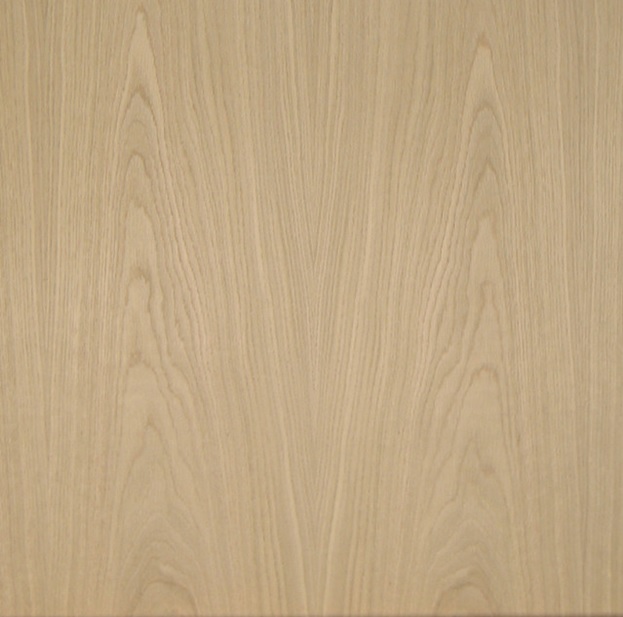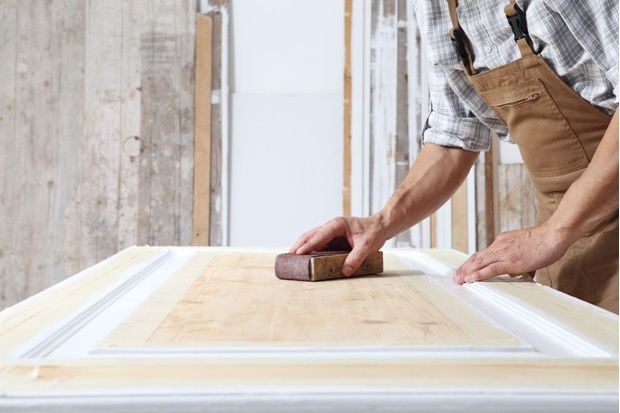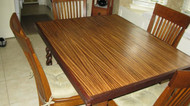What Is Wood Veneer? All the Common Questions, Answered
May 24th 2023
Are you looking at a new project - say, building a set of shelves or a new end table, and wondering what the difference is between wood veneer, laminate, solid wood, and other alternatives?
We compiled all of the most common questions on this topic about exotic veneers like Zebrawood veneer, how veneer is made, and more. Hopefully, you find your answers here!
Is Wood Veneer Real Wood?
Yes, wood veneer is real wood. It is a very thin sheet of wood, typically around 1/42” in thickness, fixed to a backer, such as a pressure-sensitive adhesive or a paper backer. However, there are other backer options, too, such as wood-on-wood and phenolic-backed veneers
Wood veneer, though it is real wood, is very flexible and economical when compared to solid wood. It is also easy to apply to a wide variety of substrates (surfaces) using a variety of different methods.
What Is the Purpose of Wood Veneer?
There are multiple “purposes” of wood veneer. One is to give crafters, hobbyists, and builders the flexibility to make it look as though an item is made of solid wood, without the work or the expense. Also, there is generally a vastly wider selection of exotic and unusual veneers available to the public than there is of solid woods.
Since many wood veneer sheets or panels can be made from one log, it is more economical in terms of costs and natural resources, too.
Moreover, applying wood veneer to some substrates, such as MDF or particleboard, alleviates some of the concerns of working with solid wood, which is very temperamental and can warp, check (split) or crack in response to changes in humidity or temperature.
What Is the Difference Between Wood and Wood Veneer?
This is a bit of a tough one to answer because wood veneer is real wood. It is just not solid (much thicker) wood.
The only difference between wood and wood veneer is that the latter is a very thin “slice” of wood applied to a backer - that’s it.
How Is Wood Veneer Made?
There are several methods by which wood veneer is made. One of the most common methods is the rotary cut, in which the log is centered in a lathe and a blade is angled into the side of a log. The log is then rotated around the lathe, enabling the blade to shave off a long, thin, continuous sheet of veneer.
Another cut is quarter slicing, in which the log is cut perpendicular to the annular rings, giving the grain a straight appearance.
Sometimes the log is cut lengthwise, cutting a thin sheet from the top of the log to the bottom. A similar cut is the “flat cut” which cuts a thin sheet parallel to the center of the log. Both of these cuts produce beautiful, raised cathedrals (pictured below).

Half-round slicing produces a sheet by removing a sheet on an arc parallel to the center of the log. This also produces an appearance similar to flat-cut, with raised, arched cathedrals, although they may be slightly distorted. Don’t let the negative connotation of that word fool you, though, as irregular cathedrals can be quite aesthetically beautiful.
Finally, there is rift-cut veneer, which follows the natural divisions in the wood’s grain. This minimizes irregularities and is very strong and stable.
What Is the Quality of Wood Veneer Furniture?
Veneer itself, made from wood, is inherently high-quality. As for the furniture produced from it, it is as high-quality as the skills of the craftsman and the methods employed to produce it.
That is, furniture made with veneer can exhibit exceptionally high quality. Also, keep in mind that veneer can also be applied to substrates like plywood and MDF, which are both stronger and more resilient than some species of wood, and are easier to care for.
What Is the Difference Between Veneer and Laminate?
Wood veneer is made from real wood. Laminate is not. Laminate can be made from paper, plastic, and other inorganic material. Laminate is very strong and wear-resistant but it lacks the natural beauty of wood veneer.
Is Veneer More Affordable Than Real Wood?
This is also a tough question to answer because veneer is real wood. So we’ll look at this question as:
Is veneer more affordable than solid wood?
One of the great things about veneer is that it is typically much more affordable than the same species of solid wood. So yes, it can be.
Is Veneer Furniture Waterproof?
Wood veneer itself, like the real wood from which it is made, is porous and absorbent. Therefore, it is not waterproof. It can, however, be treated with finishes like lacquer, and polyurethane, which will make it much more water-resistant.
Does Wood Veneer Scratch Easily?
Wood veneer is as scratch resistant as the wood species from which it is made.While purpleheart, white oak, and zebrawood veneer are all made from hard woods, and woods like pine, spruce, and fir are softwoods, all can be possibly scratched.
Again, though, all wood veneers can be finished with top coats that make them more scratch resistant.
Can You Sand Veneer?

Not only can you sand veneer, but you can also treat it with stains, oils, and top-finishes like lacquer, shellac, and polyurethane.
Is Veneer Produced from Exotic Species (for Instance, Zebrawood Veneer)?
Veneer is produced from a wide range of exotic species, including but not limited to teak, mahogany, acacia, cocobolo, ipe, ironwood, and zebrawood veneer.
In some cases, veneer made from exotic species is more readily available than solid wood, and it is almost always, if not always, more affordable.
Moreover, since one log can be used to produce a large number of veneer sheets or panels, veneer is more sustainable for, and less taxing on, wild timber stocks than solid wood.
What Are the Most Popular Uses of Exotic Veneers, Such As Zebrawood Veneer, Mahogany, and Teak Veneer?
There are many popular uses of exotic wood veneers in addition to making furniture, shelving, cabinets, and other domestic products.
Wood veneer, such as teak veneer is widely used on marine vessels. Other species can be used on casework, trim, and to decorate musical instruments.
Realistically, the only limits on the uses of veneer are the suitability of the substrate and the creativity of the craftsman.
Still Have Questions About Wood Veneer? Contact Us!
Don’t see your question about veneer listed here? No worries, we would love to hear from you. Contact us at 800-426-6018 or at Info@OakwoodVeneer.com and let us know how we can help.
